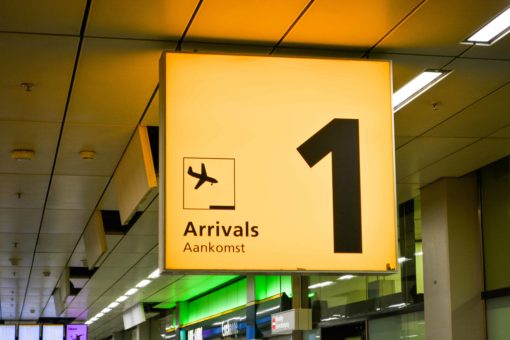As Schengen Visa experts, we are often asked about the Schengen Visa first point of entry.
“Can I enter the Schengen Area in a different Schengen Country than the one that issued my Visa?”
This is one of the questions we’ve been asked hundreds of times in the past few months.
Unfortunately, there’s a lot of confusion surrounding the rules and regulations for entering the Schengen Area.
Many people believe it is mandatory to enter the Schengen Area via the country which issued their Visa, but that is not always true.
This post will help you learn what the Schengen country of first entry is and what you need to know when crossing the Schengen borders.
Table of contents:
- What is the Schengen Visa first port of entry?
- Should your Schengen Visa first port of entry be the same as the country that issued your Visa?
1. What is the Schengen Visa First Port of Entry?

Your first port of entry is the country in which you enter the Schengen Area for the first time.
As you already know, the Schengen Area signifies a region where 27 European countries abolished their internal borders, allowing people to travel freely without going through border controls.
However, you are required to show your Visa to the immigration officers upon arrival, when crossing the Schengen borders from the outside.
If for whatever reason you are not allowed to enter the Schengen Area at your first port of entry, you may be required to return to your country of residence or be sent to a third country. This is known as “refusal of entry.”
2. Should Your Schengen Visa First Port of Entry Be the Same as the Country that Issued Your Visa?

No, you are not necessarily required to enter the Schengen Area via the country that issued your Visa.
So why is that?
Suppose you plan on travelling to more than one Schengen country.
In that case, the Schengen Visa Code clearly states that your Schengen Visa application must be submitted:
- To the Embassy of the country where you will spend most days (if you plan on spending an unequal amount of days in each country)
- To the Embassy of the country you will enter first (if you plan on spending an equal amount of days in each country)
This means that the first port of entry is not always the same as your ultimate destination within the Schengen Area.
You may be entering the Schengen Area at an airport in one country, but your ultimate destination may be a different country within the Schengen Area.
For example, suppose you book a two-week trip to Italy and a one-week trip to Switzerland.
In that case, you must submit your application to the Embassy or Consulate of Italy in your country of residence (because you plan on spending more days in Italy than in Switzerland).
However, Italy does not necessarily have to be your first port of entry. You may also enter the Schengen Area in Switzerland while Italy is your ultimate destination.
Now, you might ask yourself, “Can I apply for a Schengen Visa at one Embassy and travel to a totally different Schengen country that’s not even included in my travel itinerary?”.
The short answer is yes, you can. However, that is not something we recommend.
Here’s why.
When entering the Schengen Area at your first port of entry, you might be asked to show documents proving your travel purpose and conditions of stay (such as flight reservations for further journeys or hotel bookings).
The European External Action Service (EEAS) clearly states that immigration officers at the port of entry may require additional documents in order to verify your information and travel purpose.
Immigration officers are responsible for enforcing the rules and regulations related to the entry into the Schengen Area, so they can ask you any questions about your travel purpose, intended length of stay, or place of residence during your visit.
It is important for you to be 100% honest and forthcoming with this information, as lying or providing false information to an immigration officer can result in refusal of entry or other consequences.
This means that you have to stick to the travel itinerary you submit when applying for a Schengen Visa.
One of the main reasons for this is that the Schengen Visa is only valid for the specific purpose and duration of your trip as stated on your itinerary.
Plus, your travel itinerary serves as a record of your planned activities and movements while in the Schengen Area.
As we mentioned before, this information may be checked by immigration officers at the port of entry or other officials while you are in the Schengen Area, and deviating from your itinerary may raise suspicion or cause problems.
Therefore, it’s best for you to enter the Schengen Area in one of the countries included in your travel itinerary.
Sure, there are many reasons why people may want to apply at a different Schengen Embassy even if they don’t plan on visiting that country.
Some of the main reasons include:
- Embassies with low Schengen Visa demand have faster Visa processing times.
- Many applicants get worried that their Visa may get rejected, so they’re looking to apply at the easiest countries to obtain a Schengen Visa.
- Scheduling an appointment for a Schengen Visa can be a tedious process due to high demand. That’s why some people prefer to submit their applications to Embassies with low Schengen Visa demand where more appointment slots are available.
However, you must ensure that your required documents support the purpose of your trip to the country you are applying to.
So ask yourself – Do you really want to take the risk and submit supporting documents that do not actually reflect your planned activities and movements within the Schengen Area?
You must always remember that breaking the Schengen rules of entry or providing false information may result in a ban on entry to the Schengen countries.
That’s why we would recommend that you not apply for a Schengen Visa at one Embassy and then travel to a totally different Schengen country (that is not included in your travel itinerary).

Conclusion: The Schengen Visa point of entry refers to the point at which you enter the Schengen Area, and is typically determined by the location of the first immigration checkpoint you pass through.
It is at this point that your right to enter the Schengen Area is determined by border control authorities.
While your Schengen first port of entry does not need to be the same as the country that issued your Visa, it is important to stick to your initial plans and only enter the Schengen Area in a country included in your travel itinerary.
Remember that immigration officers are free to require any copies of the documents which you presented when applying for your Visa (as outlined on the official website of the European External Action Service (EEAS)).
Planning a trip to the Schengen Area but feeling overwhelmed by the process of applying for a Visa? Visas Association can help! As a reputable Schengen Visa Agency with a proven track record of success, Visas Association offers support every step of the way so you can streamline the application process and increase your chances of approval. For more information, don’t hesitate to reach out to us.
